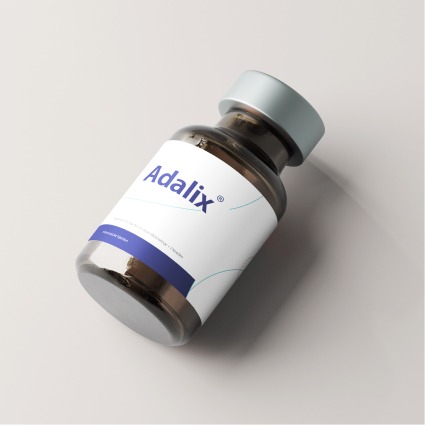Imagine turning a patient’s immune cells into a personalized “search-and-destroy” squad that hunts cancer wherever it hides. That vision, once pure science fiction, now helps thousands of people beat blood cancers and is edging into solid tumors and autoimmune diseases. CAR-T cell therapy combines basic immunology, clever genetic engineering, and industrial-scale manufacturing. It’s road from mouse cages to hospital pharmacies features unlikely heroes, spectacular successes, heartbreaking setbacks, and a price tag that still sparks fierce debate. The story that follows outlines the key discoveries, clinical milestones, and remaining hurdles behind this living drug, illustrating how a bold idea evolved into one of the most talked-about advances in modern medicine.
Foundations of CAR-T Cell Therapy: Adoptive Cell Experiments in the 1970s
The story begins with the development of adoptive cell therapy in the late 1970s. Mouse studies have shown that tumor-hungry T cells can be removed, multiplied in a dish, and reinfused to shrink existing cancers. In 1986, surgeon-scientist Steven Rosenberg and colleagues at the National Cancer Institute pushed metastatic melanoma into remission using that strategy. The proof was thrilling, but the approach was clunky. Doctors needed a fresh tumor sample, expansion times were long, and only a fraction of patients benefited.
The T-Body Breakthrough of 1989: Birth of the CAR Concept
In 1989, Zelig Eshhar at the Weizmann Institute fused two immune components: the antigen-binding tip of an antibody and the signaling tail of a T-cell receptor. The resulting “T-bodies” recognized targets without help from major histocompatibility molecules, something normal T cells cannot do. Although the engineered cells eradicated tumors in mice, they were short-lived because they lacked a survival signal. Still, Eshhar’s design proved that engineering could rewrite the instructions of living immune cells.
Building Second-Generation CAR-T Cells: Adding Staying Power
Throughout the 1990s, three laboratories, led by Michel Sadelain in New York, Stanley Riddell in Seattle, and Carl June in Philadelphia, searched for a way to keep engineered T cells alive. They added a second signaling domain, such as CD28 or 4-1BB, giving each cell both an ignition and a gas pedal. At the same time, retroviral and lentiviral vectors matured into reliable delivery trucks for genetic cargo. By the late 2000s, academic clean rooms were producing second-generation CAR-T cells within weeks, rather than months.
Clinical Milestones: First Remissions in Human Patients
In June 2010, the team treated three adults with chronic lymphocytic leukemia using a CD19-targeted construct called CTL019. Two patients endured brutal fevers, and weeks later, their bone marrow showed no detectable cancer. Six months afterward, six-year-old Emily Whitehead became patient number ten. She faced a dangerous cytokine storm, spent several days on a ventilator, and then her leukemia disappeared. Emily’s widely reported recovery turned the “living drug” from a laboratory idea into a headline-making reality.
Regulatory Landmarks: CAR-T Therapies Win FDA Approval
On August 30, 2017, the U.S. Food and Drug Administration approved tisagenlecleucel (brand name Kymriah) for the treatment of children and young adults with relapsed or refractory acute lymphoblastic leukemia. Eight weeks later, the agency cleared axicabtagene ciloleucel (Yescarta) for adults with large B-cell lymphoma. In less than two months, CAR-T therapy leaped from small institutional trials to a fully recognized drug class.
Growth of the Approved Product Line from 2018 to 2025
By spring 2025, the FDA had authorized seven autologous CAR-T products. Five target CD19, a surface protein on most B-cell malignancies, and two target BCMA in multiple myeloma. Trial response rates range from approximately 40% to nearly 100%, depending on the stage of the disease and the prior therapy. Europe and China have issued parallel approvals, while India shook the market in January 2025 with a homegrown CD19 therapy priced at nearly $60,000, about one-tenth of the prevailing U.S. prices.
Why CAR-T Therapy Still Costs So Much
At American hospitals, a single infusion costs between $373,000 and $475,000, not including hospitalization. Custom manufacturing explains most of the bill. T cells are harvested through leukapheresis, shipped to a centralized facility, genetically modified, and then expanded for 10 to 14 days. They are tested, frozen, and subsequently shipped back. In real-world practice, the vein-to-vein clock averages five to eight weeks, a dangerous delay for aggressive cancers.
Speeding Up Manufacturing with Fresh and Automated Processes
Developers are attacking that timeline in two main ways. First, “fresh” CAR-T products skip cryopreservation and return to the clinic in as little as seven days, as shown by the Belgian program GLPG5101. Second, fully automated systems such as the Cell Shuttle aim to reduce labor and contamination risk while running multiple therapies in parallel. A commercial-scale robotic facility is slated to open in New Jersey later this year. Regulators will decide whether hands-off manufacturing meets safety standards, but the push for speed is unmistakable.
Breaking into Solid Tumors: Early Signs of Success
Blood cancers provide open pathways for circulating T cells, whereas solid tumors create physical and chemical barriers that impede their movement. For years, those defenses limited CAR-T success. At the 2025 American Society of Clinical Oncology meeting, however, a randomized study in advanced gastric and gastroesophageal junction cancer showed that a claudin-18.2 CAR-T extended median overall survival by about 40 percent compared with standard care. A small survey of recurrent glioblastoma reported tumor shrinkage in more than half of the treated patients. The sample sizes were modest, but the traditional wall around solid tumors finally cracked.
Beyond Oncology: CAR-T Cells in Autoimmune Diseases
In 2022, a German team treated five young adults with severe systemic lupus erythematosus using an academic CD19 CAR-T. All five stopped immunosuppressive drugs and stayed in remission. Similar success stories have emerged from China, the United States, and France. Kyverna Therapeutics is currently conducting a Phase II trial for lupus nephritis and stiff-person syndrome. If larger studies confirm these findings, CAR-T could evolve from a cancer killer into a reset button for out-of-control immune systems.
Key Challenges That Lie Ahead
Before CAR-T can fulfill its promise for every patient, developers and clinicians must steer around several stubborn roadblocks. Some hurdles are biological, such as tumors that evade their target antigen, while others are logistical, including the cost and complexity of custom manufacturing. Toxicity management, global access, and the quest for truly off-the-shelf products round out the list. Together, these challenges will shape the next chapter of research, regulation, and real-world adoption.
Antigen escape
About one-third of relapses happen because tumor cells lose or splice away the target antigen. Dual-target and logic-gated CARs are under study, but the regulatory path is uncharted.
Toxicity
Cytokine release syndrome affects most recipients, and neurotoxicity strikes roughly ten percent. Tocilizumab and steroids blunt acute episodes, yet chronic issues such as low antibody levels add cost.
Manufacturing inequality
Most clean rooms sit in wealthy nations. Middle- and low-income regions need local facilities, trained staff, and shared standards.
Off-the-shelf ambitions
Allogeneic CAR-T products, edited to avoid graft-versus-host disease, promise convenience but have shown higher infection rates so far. Balancing speed with safety remains difficult.
Looking Forward: Faster, Broader, and More Affordable Care
The next five years are likely to focus on three key themes. First, faster vein-to-vein times; seven-day turnarounds are becoming a realistic goal. Second, broader disease targets, early solid tumor wins, and autoimmune breakthroughs hint that CAR-T is evolving into a platform technology. Third, better access; India’s low-cost entry disrupted pricing assumptions, and automated plants may drive costs lower still.
Back in 1989, Zelig Eshhar rewired a single T cell in a small laboratory. He could not have imagined a multibillion-dollar industry or a little girl named Emily celebrating her thirteenth cancer-free birthday. Yet the core idea is unchanged: take nature’s patrolling cells, rewrite their orders with human ingenuity, and send them back into battle. From mouse studies to intensive care wards and globally networked manufacturing hubs, CAR-T therapy shows what can happen when biology and engineering work together. The journey is far from finished, but the goal of curative personalized immunotherapy on demand feels closer than ever.
For more details about Opal Bio Pharma’s groundbreaking work in the pharmaceutical industry, be sure to visit their official website.

